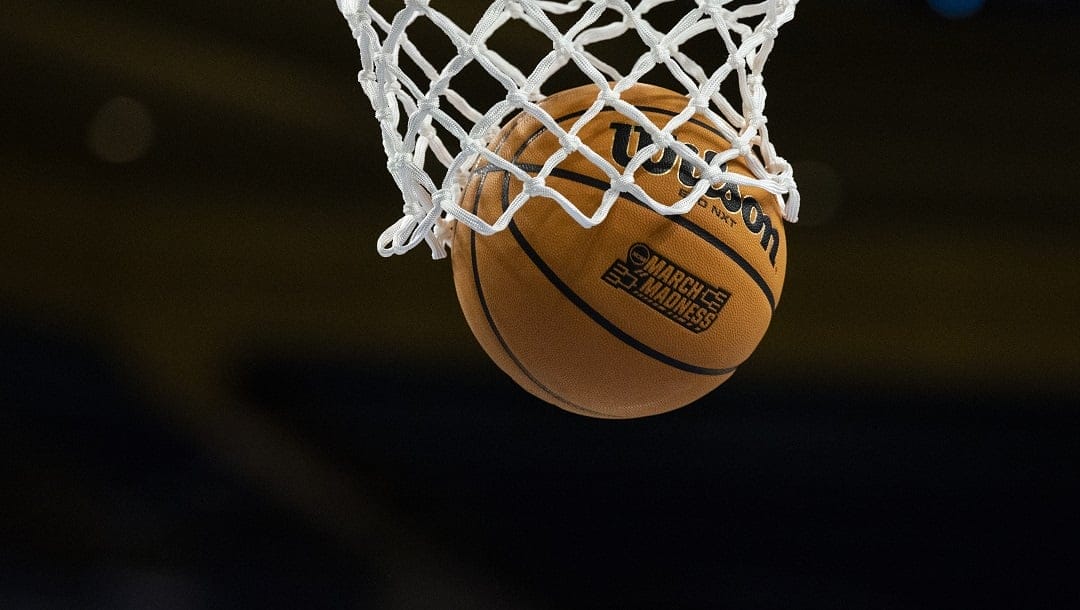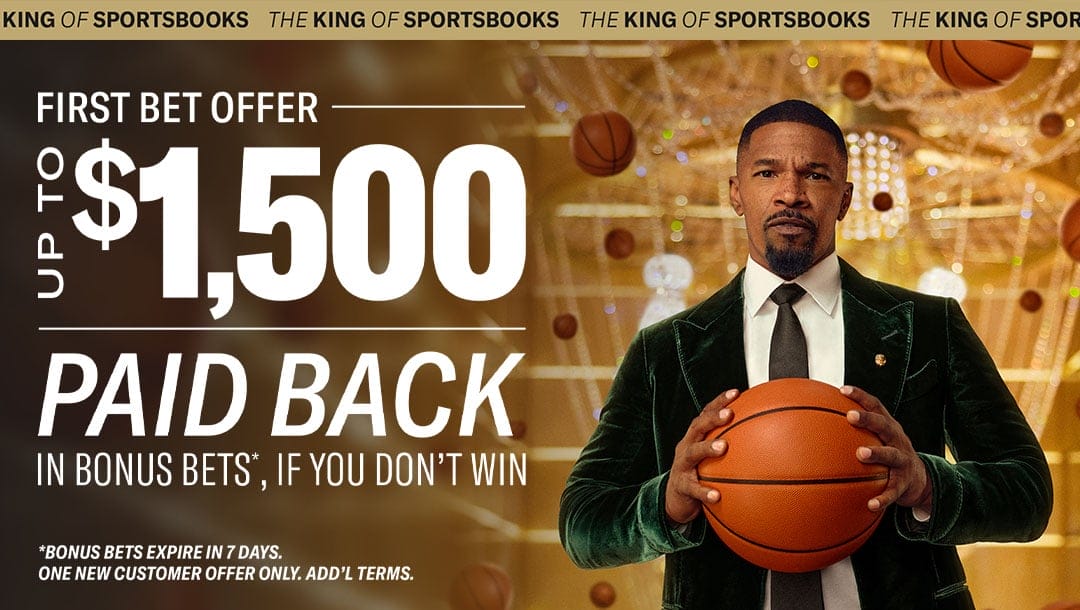By now, you’re no doubt aware of the elementally strange Final Four that has befallen the college basketball world in late March, 2023.
Miami, Florida Atlantic, UConn, and San Diego State have defied the college basketball betting odds, winning their respective regions and crashing the party that is March Madness.
This Final Four is new, and different, and is thus eligible for dissection by take. Lots of people who don’t really care about college basketball seem to have produced a bumper crop of opinions about college basketball.
That’s likely because of the way it’s consumed in popular culture. The NCAA Tournament, in particular, bestows a distinct feeling of expertise upon non-experts.
You can almost imagine your local mayor or NFL writer thinking, “Hey, look, I just predicted 67 basketball games, even though I haven’t watched a full hoops game since Jim Calhoun was coaching. Look! I know things!”
March Madness is incredible, but it renders the four months of regular season completely meaningless. Maybe the NCAA should let the higher seeds start each game with a lead, like the PGA Tour Championship
— Ben Volin (@BenVolin) March 25, 2023
One thing that everyone is undeniably right about: This is a weird Final Four. There’s no fighting that. Some stats that are floating around:
- This is the first and only Final Four with exactly zero McDonald’s All-Americans since the NCAA Tournament began seeding teams in 1979.
- San Diego State and Miami have never made the Final Four before now. Florida Atlantic had never won a game in the NCAA Tournament in any round.
- A Final Four without a No. 1 seed had happened only three previous times; a Final Four without a No. 1 seed, No. 2 seed, or No. 3 seed has never happened. Obviously.
- The summed seed line of this tournament is aberrationally high. Typically, the sum of the Final Four seeds is quite low and mostly made up of top seeds. Last year, it was 13 — No. 1 Kansas, No. 2 Villanova, No. 2 Duke, and No. 8 North Carolina. This year, it’s a whopping 23, which is topped only by the 2011 Final Four that included No. 8 Butler and No. 11 VCU.
So yes, this is indeed an exotic national semifinal. Outside of ambitious third graders and psychic dolphins, I can’t imagine who could have predicted a bracket that looked even remotely like this.
Now, though, our collective Sports Media Industrial Complex decrees that it must all add up to something. It has to be a prop in a greater conversation about … oh, pick a topic. The death of college basketball? The departure of great coaches? NCAA? NIL? Transfers? TV ratings? Bluebloods? A vague and overly fond remembrance of the sports of yesteryear?
We’ve had two draining, entertaining, give-us-more weeks of March Madness. But there’s one problem with an AutoFill Final Four: you can’t have a David without a Goliath. My column: https://t.co/KBBvkHkQVS
— Ivan Maisel (@Ivan_Maisel) March 27, 2023
NCAA Tournament Final Four: How We Got Here
Here’s the truth, at least as I see it. Yes, college basketball has changed a lot over the past several years. What aspect of our lives hasn’t?
The shape of college hoops has evolved thanks to mutagens like NIL money and greater ease of transfer. The sport is also dealing with an additional short-term variable, which is the added COVID year of eligibility that is still working its way through rosters and recruiting classes.
But these elements are available — in theory, at least — to every school competing at the Division I level.
The main variable, I would argue, is how aggressively and intelligently a particular coaching staff deploys them to their advantage.
In Miami’s case, the Hurricanes leaned hard into NIL. Miami is like many power-conference schools in that it has an ultrarich booster (John Ruiz, in this case) who can underwrite big fundraising efforts and support NIL deals. Its biggest prize was departing Kansas State guard Nijel Pack — the fourth-ranked player in the transfer portal at the time — whom Miami secured with a two-year, $800,000 NIL deal.
So that’s how Miami chose to scheme things.
In San Diego, you’ll find a very different story. Brian Dutcher — an old-school career assistant who loyally served under Steve Fisher from 1989 to 2017 — plays a roster full of old guys. Of the top nine scorers on the roster, seven are seniors and two are juniors. A few were transfers; many were home-grown.
At Florida Atlantic, the Owls are shockingly young. Vladislav Goldin, whose go-ahead dunk gave the Owls the lead over Kansas State with 6:12 to play, is a seven-foot gem mined out of Russia by the Texas Tech coaching staff. He grew up wrestling in western Russia before a prep year in the United States. FAU grabbed him in the transfer portal after last season.
Johnell Davis and Alijah Martin, the team’s leading scorers, are home-grown sophomores. Michael Forrest (8.4 ppg) is the only senior on the team. Dusty May is giving coaches a clinic on how to identify, recruit, and develop young talent from a mid-major platform.
Then, there’s UConn, which … Well, they just kind of do UConn stuff. Recruit awesome players. Find a great coach. Build a great culture. Crack the top 10. Go on a run we probably all should have seen coming. You know they’ve won more national championships since 1999 than Kansas and Kentucky combined, right? This is what a modern Blueblood looks like.
College Basketball Changes; Madness in March Does Not
In the days of yore, there was a singular, traditional way to win: Have better players (and better coaching) than the other team. That’s true for every team sport, but it’s especially true in basketball, where one or two great players have a direct and undeniable effect on the competitiveness of a team.
College basketball had powerful Bluebloods with blue-chip recruits and Hall of Fame coaches. In opposition to that were successful Cinderellas, who effectively cultivated and developed lesser recruits into gritty elder statesmen.
There are far more paths to success now.
Teams can recruit traditionally, out of high school; they can pick up junior college guys who crashed out early.
They can identify and polish diamonds in the rough.
They can master the transfer portal.
They can plug into an NIL infrastructure and supercharge key recruiting efforts with pure capitalism.
Love the Final 4 and will watch obviously but when you have FAU and SDSU it’s gonna be very tough to give those guys airtime all week.
Duke – UNC this ain’t.
No Creighton blows 😞
— Jason McIntyre (@jasonrmcintyre) March 26, 2023
Skilled programs will do one of these things really well, or at least do many of them effectively. Blend coaching and transfer portal savvy, as near-Final Four team Kansas State did, or elevate an already well-coached team with high-leverage NIL money, as Miami has.
But more pathways to success will correlate to more chaos, which is what the men’s NCAA Tournament saw this year. Some of that is systemic to a flatter, more competitive sport, but the rest is pure chaos theory.
And as if all that wasn’t enough, then consider that greater collective reliance on three-point shooting will always lead to huge swings in volatility when measuring results. Anyone that watched Alabama play this year knew it could be done quickly if the threes ever stopped falling; against San Diego State, they finally did.
Even the results we did get — those same results that I think are emblematic of a more competitive college basketball space — have a giant element of randomness. Every Final Four team left standing in this tournament was in serious jeopardy of losing in the first round.
All 2023 Men's Final Four teams were tied or trailed in the First Round:
UConn trailed No. 13 Iona 39-37 at halftime
Miami trailed No. 12 Drake 56-53 with 3:24 left
San Diego State was tied 53-53 with No. 12 Charleston with 3:27 left
FAU trailed No. 8 Memphis with 5 seconds left pic.twitter.com/y1YcFjvDQC— CBS Sports College Basketball 🏀 (@CBSSportsCBB) March 27, 2023
So if you’re still trying to figure out what this Final Four means, try this prescription: When you take 68 college basketball teams and annually smash them together, weird things are bound to happen.
And when you crank up the potential for variance with more democratized access to success and increased reliance on shooting in a single-elimination tournament, the peaks and valleys of that weirdness are going to be drawn out to greater lengths.
i try very hard to not ever be a "stay in your lane" person because i do not stay in my lane but we absolutely need to stop the old head cfb dudes from talking about this tournament
— The Smoking Musket (@smokingmusket) March 27, 2023
Maybe a No. 1 seed will win the tournament again in 2024, like it did in 2022, 2021, 2019, 2018, and 2017. Maybe we’ll get our first No. 13 seed in the Final Four.
I have no idea. Neither does anyone else. But a sport that gives more teams (and fans) hope that a Final Four is obtainable is an abject positive, no matter what your favorite NHL beat writer says.
Basketball Odds at BetMGM
BetMGM has up-to-the-minute basketball odds for games around the world, including thousands of college basketball games each year.
Whether you’re building college basketball parlays, betting on spreads, or betting on national championship odds, there’s something for everyone.
Sign in to your account today — or, if you don’t have an account, sign up today with a sportsbook welcome offer — to start betting. And always check your new account for updated sportsbook promos and bonuses.


